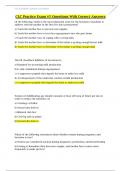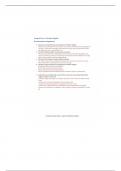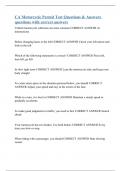Summary
Summary Edexcel A-Level Business - In depth Theme 1 notes
- Course
- Institution
- Book
This document contain 57 pages, which offer a great detail in both knowledge and analysis for all topics in theme 1, found in the Level Business edexcel contents.
[Show more]







